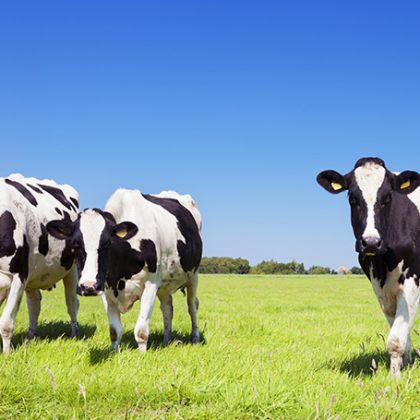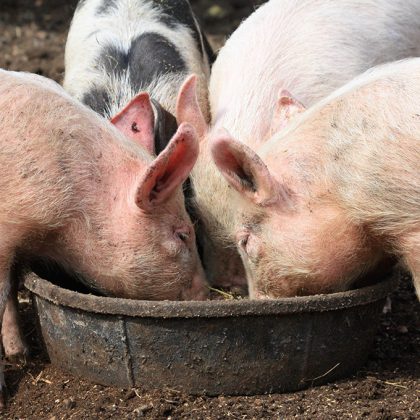Mycotoxins: A hidden hazard for feedlot beef cattle
The animal Article of the Month for October is “Mycotoxin-contaminated diets and an adsorbent affect the performance of Nellore bulls finished in feedlots” by L.…

The animal Article of the Month for October is “Mycotoxin-contaminated diets and an adsorbent affect the performance of Nellore bulls finished in feedlots” by L.…

The animal Article of the Month for September is “Genetic position of Hungarian Grey among European cattle and identification of breed-specific markers” by A.…

The animal Article of the Month for August is “Milk production responses and rumen fermentation of dairy cows supplemented with summer brassicas” by M.…

The animal Article of the Month for July is “Metabolic hormones, grazing behaviour, offspring physical distance and productive response of beef cow grazing at two herbage allowances” by M.…

The animal article of the month for June is “Using animal‐mounted sensor technology and machine learning to predict time-to-calving in beef and dairy cows” by G.…

The animal article of the month for May is “Effect of altering ruminal pH by dietary buffer supplementation on methane emissions from sheep fed forage rape” by Sun et al.…

The animal article of the month for April is “LIFE BEEF CARBON: a common framework for quantifying grass and corn based beef farms’ carbon footprints” by O’Brien et al.…

On behalf of the organizing committee of the XIIIth International Symposium on Ruminant Physiology (ISRP) we are pleased to announce the special issue of animal with 18 review papers which highlighted the different sections of this symposium.…

The animal article of the month for March is “Comparison of performance and fitness traits in German Angler, Swedish Red and Swedish Polled with Holstein dairy cattle breeds under organic production” by Bieber et al.…

The animal article of the month for February is “Increased dietary protein for lactating sows affects body composition, blood metabolites and milk production” by Strathe et al.…

The animal article of the month for January is Comparison of effects of four weaning methods on health and performance of beef calves by, J.…

Protein from pigs remains the most consumed animal protein globally and with this comes the challenge to produce more with less resources.

The animal article of the month for December is “Evolution of pig intestinal stem cells from birth to weaning” by N.…

The animal article of the month for November is “Transfer of passive immunity in dairy calves: the effectiveness of providing a supplementary colostrum meal in addition to nursing from the dam” by Lora et al.…

The animal article of the month for October is “Genetic variation in milk urea nitrogen concentration of dairy cattle and its implications for reducing urinary nitrogen excretion” Agricultural industries are addressing the challenges of reducing their environmental footprint while maintaining economic viability for farming families and their communities.…

The special topic in August’s issue of animal is Multicriteria assessment of livestock systems using a graphical tool While the world has limits, the global population is growing, along with an increased demand for food.…

The animal article of the month for August is ‘The effect of different wavelengths of light during incubation on the development of rhythmic pineal melatonin biosynthesis in chick embryos’ Melatonin is a neurohormone, which is involved in the control of day/night rhythms in a number of biochemical, physiological and behavioural processes.…

The animal article of the month for July is ‘Use of Geographic Information System tools to Predict Animal Breed Suitability for Different Agro-Ecological Zones’ Predicting breed suitability is challenging in livestock production.…

The animal article of the month for February is ‘Effects of a participatory approach, with systematic impact matrix analysis in herd health planning in organic dairy cattle herds‘ There is a strong focus on animal health and welfare in organic farming, and herd health and production management services are therefore important.…

The animal article of the month for January is ‘Review: Assessing fish welfare in research and aquaculture, with a focus on European directives‘ In recent years, teleost fish have been increasingly exploited as animal models for scientific research in both the biomedical and ecological fields by using various ‘omics’ approaches, as they offer several practical advantages compared with mammals or other vertebrates.…